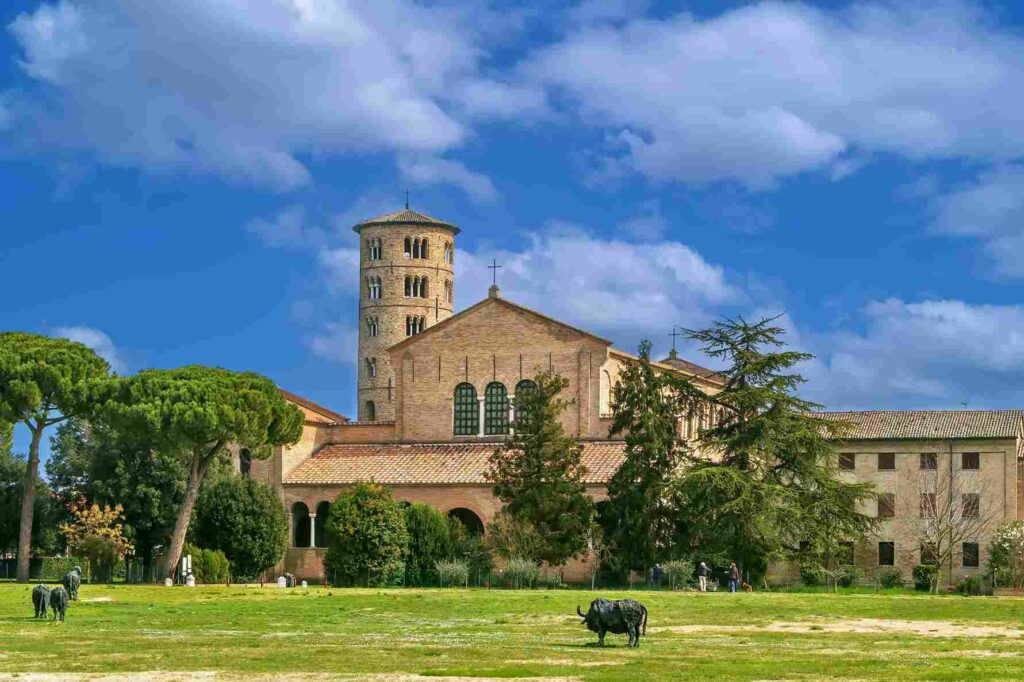Ravenna, located in the Emilia-Romagna region of Italy, is a city of extraordinary beauty and priceless historical, cultural and artistic value. This city is famous for its magnificent Byzantine mosaics, which have been declared a UNESCO World Heritage Site and represent one of the greatest examples of mosaic art in the world.
The beauty of Ravenna lies first and foremost in its historical monuments. In fact, this city is world renowned for being home to eight monuments that have been declared UNESCO World Heritage Sites. These monuments represent extraordinary evidence of early Christian and Byzantine art and architecture. Here is a list of these sites:
Basilica of San Vitale: Built in the 6th century, this basilica is famous for its extraordinary mosaics, which depict imperial figures and religious scenes of great beauty and artistic complexity.
Mausoleum of Galla Placidia: This small cruciform building houses 5th-century mosaics known for their deep blue and Christian symbolic representations.
Neonian (or Orthodox) Baptistery: One of the oldest monuments in Ravenna, this baptistery features mosaics illustrating the baptism of Christ and geometric and floral decorations.
Arian Baptistery: Built by the Goths in the 5th century, it features mosaics depicting the baptism of Christ in a slightly different iconographic style than the Neonian Baptistery.
Archbishop's Chapel (or Chapel of St. Andrew): Located inside the Archiepiscopal Museum, this 5th-century chapel is the only surviving example of an early Christian archiepiscopal chapel.
Basilica of Sant'Apollinare Nuovo: Originally built as a palatine church for the Ostrogothic king Theodoric, it is famous for its mosaics decorating the naves, depicting processions of saints and scenes from the life of Christ.
Mausoleum of Theodoric: Unique in its architecture, this 6th-century mausoleum was built by the Ostrogothic king Theodoric as a burial place, featuring a huge monolithic stone dome.
Basilica of Sant'Apollinare in Classe: Located just a few kilometers from the center of Ravenna, this 6th-century basilica is known for its apsidal mosaics depicting St. Apollinare in a heavenly landscape.
These monuments not only reflect the cultural and artistic richness of ancient Ravenna, but also illustrate the fusion of Roman and Byzantine artistic traditions. Each site offers a unique window into the city's glorious past, when it was an important political and religious center of the Western Roman Empire and later the Byzantine Exarchate.
Want to enjoy some of its beauty from the comfort of your own home? We have a video for you!

